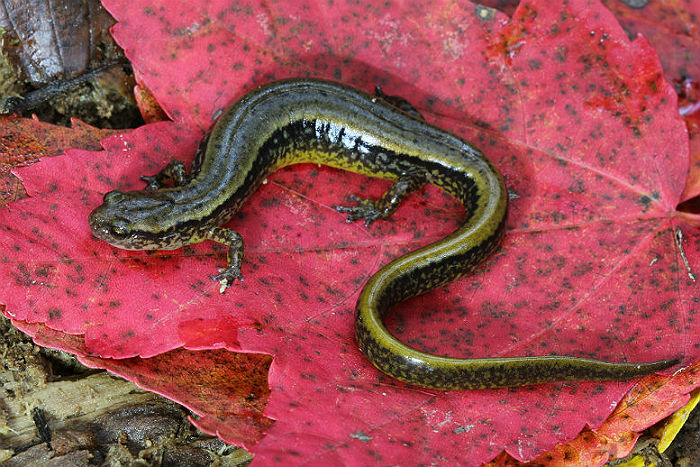The last reptiles and amphibians of the year seen this month, along with the changing colors of Autumn leaves.
Two-lined Salamander/Red Maple

Common Snapping Turtle/Shagbark Hickory

Midland Painted Turtle/Sycamore


There has been much talk in recent years of amphibian declines and it is indeed a serious issue. Research efforts are being made to try to get a better understanding of this worrisome problem. Depsite this, there are some amphibians that seem to be doing quite well. One of these is the Green Frog, it is an amphibian found over much of the eastern United States (including my backyard).
Male and female adult Green Frogs can easily be determined by the size of their eardrums. For males the tympanum (that circle you see behind the frog’s eye) is significantly larger than the eye. For females, it is about the same size as the eye. Almost any permanent body of water can be habitat for Green Frogs. Ponds, marshes, lakes swamps and the slow parts of creeks and rivers can be homes to these amphibians.
Green Frogs tend to stay close to the water’s edge, ready to leap in (and often give a squeak) if they sense danger. Warm, rainy nights will often induce young Green Frogs to make overland migrations. During these times, they are sometimes forced to take up residence in puddles or ditches until the next rain comes along. Every year I have Green Frogs make their home in my outdoor turtle enclosures, even though they have wire-screened tops. Here’s one from a couple of years ago.
Like most wide-ranging reptiles and amphibins, Green Frogs are variable in their appearance. They make be green, brown or olive – or various combinations of these colors. In some cases, males can have quite a bit of yellow color on the chins. On occasion, Green Frogs with blue coloration turn up, like this one that I found today.
At this point it seems that Green Frogs are well adapted to succeed in a world that’s becoming increasingly modified by humans. It’s quite possible that in some places Green Frogs have increased in places where other frogs have declined. There are undoubtedly many factors that determine whether a species will succeed or decline. That’s why it is essential to study common species along with troubled ones, to better understand the ecological problems species face and how they solve them. There is still much to learn about this very common and flourishing frog.